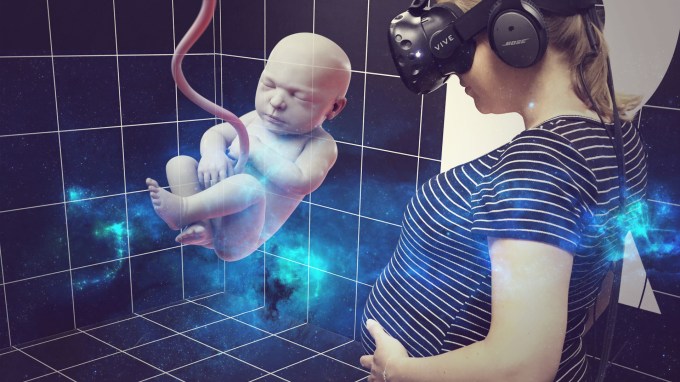Of all the potential use-cases for VR, Samuli Cantell has arguably come up with the most unusual after persuading his pregnant girlfriend to undergo 4D ultrasound scanning of their unborn child in order to generate a 3D model that could be viewed in VR.
Why did he want to do such a thing? Mostly, says Cantell, because he thought no one else had thought of doing this yet. But he also felt it would be a more personal and immersive way to get a glimpse of his unborn child vs just looking at an ultrasound scan.
“4D scans have been use to make 3D models [of unborn babies] for printing before but I wanted to create something more immersive and while doing that try to create something personal in VR,” he tells TechCrunch.
“This idea felt weird from the get go so I knew I was doing something interesting. We have been also experimenting how VR could be used in healthcare so things came together nicely on this project.”
And while he concedes there was no substitute for meeting baby Freja in real life, i.e. when she was actually born, he says he found the experience of viewing a 3D model of her in VR “very emotional and calming, yet unreal“.
Cantell, who is no stranger to the promotional power of tech novelty, having a background in digital advertising, and his own digital products studio, was also involved with a 2015 crowdfunding project to create accessible 3D prints of artworks for blind people.
“Our company is experimenting new technologies all of the time and since we have creative background we end up with pretty weird ideas every now and then,” he adds.
Turning the 4K ultrasounds of baby Freja into a VR experience involved importing DICOM files to osiriX lite in order to make the initial 3D model, which he says “turned out pretty messy, but with a little help from a friend we sculpted a nice 3D model”.
After the 3D model had been manually tweaked, it was placed in a Unity project — and the VR experience was ready for viewing.
The whole project took about a week to complete, with the ultrasound scanning process taking around an hour.
Cantell says he roped in friends to help, so did not have to pay to create the VR experience, though he reckons it would cost “a few thousand euros” for someone who was paying to do the same.
He advises anyone else wanting to put their unborn into VR to do the 4K ultrasound before week 32 of the pregnancy in order to get a cleaner 3D model.
“VR was nothing compared to meeting her IRL,” he adds of baby Freja. “With this ‘low budget’ production without animations, professional textures and lights etc. it still feels a bit like computer game.”

